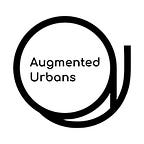Riga: DIY waterborne vehicles to bridge vibrant urban life and abandoned wilderness
Water and rivers have been a fundamental force for giving shape to our cities. Naturally, water forges connections as it cycles through the city. We believe that water can forge connections between people as well; to increase our societies and our cities resilience. We want to strengthen the river-people relationship, and what better way to do it if not stepping into the water ourselves. Here in Riga Planning region, we are working to test it in real life.
Despite heavy rain, our team in cooperation with Riga Technical University students completed building floats for testing the potential of waterway connections in river Daugava. At the same time, we have actively worked with stakeholders eager to participate and share their location for public boating network and new destinations on the banks of the river, thus meeting their own brownfield revitalization vision and enhancing their local capacity for resilience. “The pilot area is easily accessible for changing mobility modes as well as a boat launching ramp and parking. The island of Kruminsala on the other bank is rich with a diversity of biotopes and virgin nature almost like a treasure island for eco-tourism and wilderness lovers after a detailed analysis and soft intervention measures stipulated,” explains Egons Berzins, Augmented Urbans expert, Riga Technical University professor, and river Daugava waterfront planning enthusiast.
Resilience can be described as the ability of individuals, communities and systems to survive, adapt and thrive no matter what kind of obstacles and challenges we must face. While working with the concept resilience by the river, we seek to test ideas that would help our region to harness its regenerative capacity to reconcile its ecological aspects with its geographical uniqueness. Thus, by promoting new means of water transportation, creating new waterways and new connections through the river Daugava as well as creating unique destinations outside the city centre, we aim to connect places and people.
With these seemingly small interventions, we seek to start the process of a profound paradigm shift. The urban metabolism must be transformed from its current operation as a linear system into a resource-efficient, circular system driven by people themselves. We want to encourage people to work towards resiliency themselves, to take ownership of public places and ensure that everyone and every place can thrive.
One of the stakeholders on the banks of the river is keen on creating an experiment with us. Daina Kona, member of the Lafivents board speaks about her vision of resilience by the river: “One of my visions about this abandoned island Kruminsala is to create a unique cultural place with a mysterious atmosphere not far from the city. An interesting location accessible only by water, that could hold small concerts, movie nights, poetry-reading… Something specific that can only be found here. There could also be a restaurant on the island, and we would be happy to provide lunch customers from our staff.”
You see, when we think of resilience by the river, we think of bringing life to abandoned places respectfully. We think of inspiring people and giving power back to them through localized actions and implementation of their ideas. Our goal is to create a hodgepodge of ideas, incentives, visions, experiments on the banks of river Daugava led by the people themselves.
Text: Elīna Sergejeva, Riga Planning Region
Photos: Augmented Urbans Riga team
